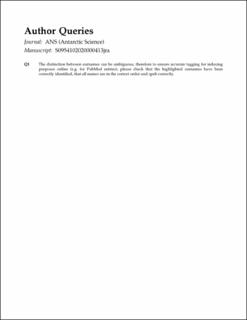The effectiveness of Virkon® S disinfectant against an invasive insect and implications for Antarctic biosecurity practices
Peer reviewed, Journal article
Accepted version

Åpne
Permanent lenke
https://hdl.handle.net/11250/2677996Utgivelsesdato
2020Metadata
Vis full innførselSamlinger
- Publikasjoner fra CRIStin - NINA [2364]
- Scientific publications [1392]
Originalversjon
10.1017/S0954102020000413Sammendrag
The flightless midge Eretmoptera murphyi is thought to be continuing its invasion of Signy Island via the treads of personnel boots. Current boot-wash biosecurity protocols in the Antarctic region rely on microbial biocides, primarily Virkon® S. As pesticides have limited approval for use in the Antarctic Treaty area, we investigated the efficacy of Virkon® S in controlling the spread of E. murphyi using boot-wash simulations and maximum threshold exposures. We found that E. murphyi tolerates over 8 h of submergence in 1% Virkon® S. Higher concentrations increased effectiveness, but larvae still exhibited > 50% survival after 5 h in 10% Virkon® S. Salt and hot water treatments (without Virkon® S) were explored as possible alternatives. Salt water proved ineffective, with mortality only in first-instar larvae across multi-day exposures. Larvae experienced 100% mortality when exposed for 10 s to 50°C water, but they showed complete survival at 45°C. Given that current boot-wash protocols alone are an ineffective control of this invasive insect, we advocate hot water (> 50°C) to remove soil, followed by Virkon® S as a microbial biocide on 'clean' boots. Implications for the spread of invasive invertebrates as a result of increased human activity in the Antarctic region are discussed. biosecurity, Chironomidae, invertebrate control, Signy Island, species management
